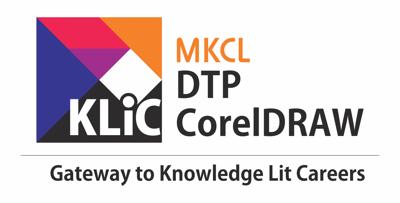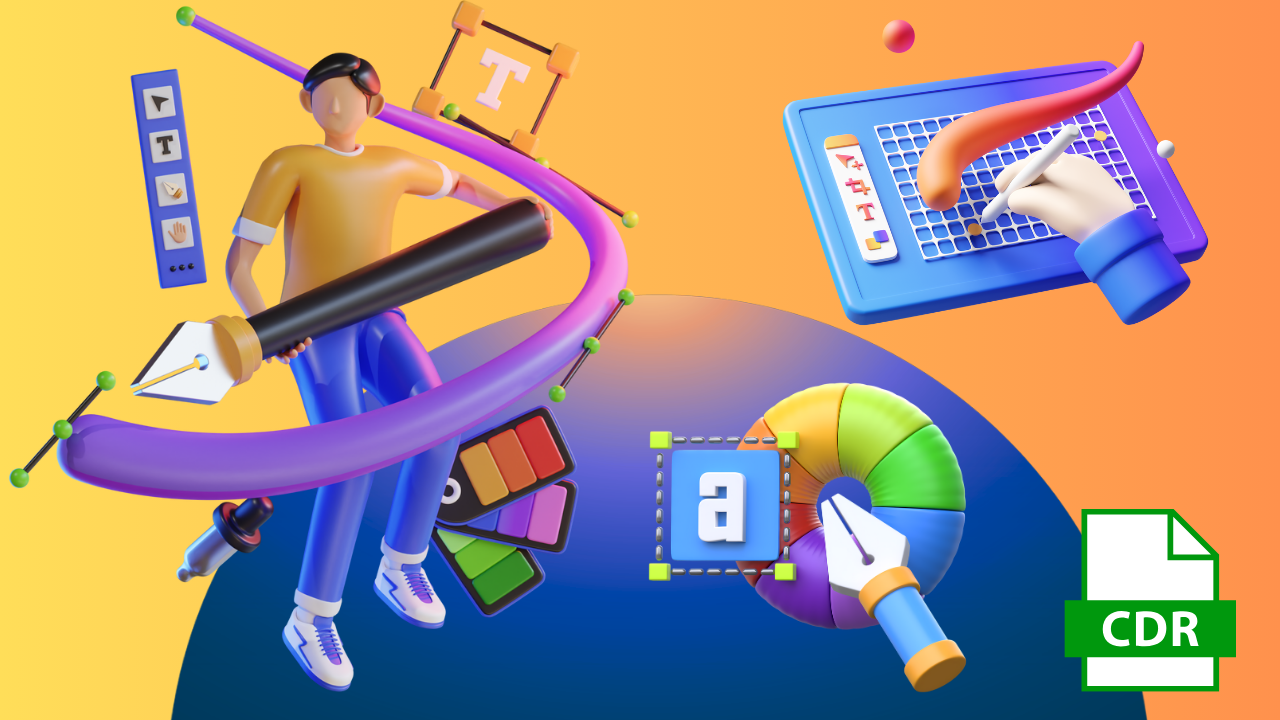- In this course, you will learn to:
- Explain the primary objectives of learning desktop publishing
- List the applications and significance of desktop publishing
- Identify the key users and target audience for desktop publishing
- Find various formats and outputs in desktop publishing
- Identify popular tools essential for desktop publishing
- Recognize various client needs and preferences during projects
- Demonstrate techniques for working with images effectively
- Explain the importance of understanding and respecting copyrights in publishing
- Compare different design selection criteria for optimal outcomes
- Identify and explain design principles such as balance, contrast, alignment, and more
- Explain basic shapes, colors, and their psychological impacts in design
- Identify the role of typography in print, digital design, and branding
- Demonstrate the use of shapes, colors, and composition through various case studies
- Identify popular digital photo editing tools and their offerings
- Identify the fundamental features and functionalities of graphic design software
- Explore the user interface and navigation controls of graphic design software
- Explain the basics of page setup and file management in graphic design projects
- Apply color theory and its application in design projects
- Organize design elements and objects effectively using vector tools
- Demonstrate proficiency in manipulating text and objects within vector tools
- Operate advanced features such as layers, tables, and fill tools
- Modify and customize designs according to specific project requirements
- Predict potential design challenges and solutions in various design case studies
- Compare and contrast different printing methods and paper types for optimal output quality

CorelDraw Essentials
Learn CorelDraw tools for vector illustration, layout design, and graphic creation.
Introduction
What you'll learn ?
- At the end of this course, learners will be able to:
- Interpret the fundamental purposes of learning desktop publishing and its significance in various scenarios
- Illustrate the applications of desktop publishing and its impact on efficiency and creativity
- Paraphrase information about the key users and target audience for desktop publishing to ensure targeted and effective designs
- Compare various formats and outputs in desktop publishing for appropriate application
- Utilize essential tools in desktop publishing to enhance project quality and productivity
- Interpret and address client requirements effectively during projects
- Demonstrate techniques for working with images effectively in desktop publishing
- Explain the importance of understanding and respecting copyrights in desktop publishing
- Compare different design selection criteria for optimal outcomes in desktop publishing
- Apply design principles such as balance, contrast, alignment, and more in desktop publishing projects
- Assess the influence of shapes, colors, and their psychological impacts in design
- Examine the role of typography in enhancing communication through print and digital design
- Illustrate the use of shapes, colors, and composition through various case studies
- Review and evaluate popular digital photo editing tools to optimize design workflows
- Interpret the fundamental features and functionalities of graphic design software and apply them using vector tools
- Illustrate proficiency in navigating the user interface and utilizing its tools for design tasks
- Transform conceptual ideas into visually appealing designs through practical application of design principles
- Interpret and make design choices and solutions by applying fundamental design principles and industry standards
- Compare and contrast design elements and techniques to optimize creative decision-making
- Report findings and insights from design projects, demonstrating effective communication skills
- Review and restate key concepts and techniques learned throughout the course for reinforcement
- Experiment with various design approaches and strategies to expand creative capabilities
- Predict and diagnose potential design challenges, implementing appropriate solutions
- Assess and appraise design outcomes, evaluating their effectiveness and adherence to project requirements
Certification
- KLiC courses are recognised by Yashwantrao Chavan Maharashtra Open University (YCMOU).
- MKCL provides certificate to the KLiC learner after his/her successful course completion.
- Yashwantrao Chavan Maharashtra Open University (YCMOU) provides mark sheet to successfully passed KLiC learners (Jurisdiction: Maharashtra).
Academic Approach
The academic approach of the courses focuses on the “work-centric” education i.e. begin with work (and not from a book!), derive knowledge from work and apply that knowledge to make the work more wholesome, useful and delightful. The ultimate objective is to empower the Learner to engage in socially useful and productive work. It aims at leading the learner to his/her rewarding career as an employee or entrepreneur as well as development of the community to which s/he belongs. Learning methodology:
- Step -1: Learners are given an overview of the course and its connection to life and work.
- Step -2: Learners are exposed to the specific tool(s) used in the course through the various real-life applications of the tool(s).
- Step -3: Learners are acquainted with the careers and the hierarchy of roles they can perform at workplaces after attaining increasing levels of mastery over the tool(s).
- Step -4: Learners are acquainted with the architecture of the tool or tool map so as to appreciate various parts of the tool, their functions, utility and inter-relations.
- Step -5: Learners are exposed to simple application development methodology by using the tool at the beginner’s level.
- Step -6: Learners perform the differential skills related to the use of the tool to improve the given ready-made industry-standard outputs.
- Step -7: Learners are engaged in appreciation of real-life case studies developed by the experts.
- Step -8: Learners are encouraged to proceed from appreciation to imitation of the experts.
- Step -9: After the imitation experience, they are required to improve the expert’s outputs so that they proceed from mere imitation to emulation.
- Step-10: Emulation is taken a level further from working with differential skills towards the visualization and creation of a complete output according to the requirements provided. (Long Assignments)
- Step-11: Understanding the requirements, communicating one’s own thoughts and presenting are important skills required in facing an interview for securing a work order/job. For instilling these skills, learners are presented with various subject-specific technical as well as HR-oriented questions and encouraged to answer them.
- Step-12: Finally, they develop the integral skills involving optimal methods and best practices to produce useful outputs right from scratch, publish them in their ePortfolio and thereby proceed from emulation to self-expression, from self-expression to self-confidence and from self-confidence to self-reliance and self-esteem!
Syllabus
- Getting introduced to the DTP Course
- Design Principles
- Fundamentals of Typography
- What Are Font File Types?
- What Are Typesetting, Legibility, Hierarchy and Readability?
- Understanding and using the image resources
- What are copyrights?
- How to choose images?
- Learning features and tools
- Introduction to the basics
- Exploring workspace and customization
- Image, Color Modification Understanding
- Mastering photo editing tools
- Exploring drawing and coloring tools
- Using the advanced tools
- Using the text tools
- Using Brush and Paint
- Working with Selections
- Scaling
- Utilizing Layers
- Working with Layers
- Getting Creative with Types
- Advanced Text Options
- Masks
- Filter Gallery
- Arranging the Workspace
- Various Palettes
- Printing
- Output Options
- Colors in Printing
- Exploring the user interface
- Understanding the basics
- Working with Page Set-up
- Working with files and documents
- Knowing and using the basic controls
- Using the Viewing options
- Understanding the psychology of colors
- Understanding what Harmonious colors are
- Working with colors
- Working with the Color Palette
- Exploring the use of various color fills
- Working with other Fill tools
- Manipulating the objects
- Inserting and formatting text
- Working with Layers
- Working with Tables
- Creating a Visiting Card
- Formatting the Visiting Card
- Studying Bitmaps
- Going 3D
- What are primary sketches?
- The process of designing an output
- What is a Moodboard?
- Concluding lines/Outcome
- Listing various types of printers
- Printers based on technology: Learning
- Printers based on characteristics: Learning
- Learning about the different printer qualities
- Designing Shapes, Completing Brochure design
- Learning about the printing concepts
-
- Learning about the printing terms
- Creating a nice Product Box Package design
- Formatting, exporting Product Box design
- Defining DPIs, resolutions
- Defining the printing fonts
- Identifying the ideal file formats
- Identifying various printing methods
- Studying Digital Printing vs. Offset Printing
- Defining the types of printer papers
-
- Types of printer papers: Understanding
-
- Suitable papers for printer types: Understanding
-
- Attributes of printer papers: Learning
- Completing a Print Project
- Design anything easily
- Suitable platforms for
- Design graphics with purpose
- Bring out your creativity
- Other enabling tools
- Enable powerful machine learning
- Using cutting-edge typography
- Some user-inspired enhancements
- Putting these features into practice
- Designing field: Various job opportunities
- Requirements to start your designing career
- Role of vector graphic tool in Print Media
- Designing Tri-fold Brochure in Adobe Photoshop
- Modifying Tri-fold Design
- Creating Magazine Cover and Back Page: Beginning
- Enhancing, Exporting Magazine Cover design
- CSV file and its role in Data Merging: Understanding
- Data Merging: Understanding utility
- Data Merging from a Microsoft Excel document
- Data Merging from a Microsoft Word file
- Data Merging from a PDF file
Evaluation Pattern
Evaluation Pattern of KLiC Courses consists of 4 Sections as per below table:
| Section No. | Section Name | Total Marks | Minimum Passing Marks |
|---|---|---|---|
| 1 | Learning Progression | 25 | 10 |
| 2 | Internal Assessment | 25 | 10 |
| 3 | Final Online Examination | 50 | 20 |
| Total | 100 | 40 | |
| 4 | SUPWs (Socially Useful and Productive Work in form of Assignments) | 5 Assignments | 2 Assignments to be Completed & Uploaded |
YCMOU Mark Sheet
Printed Mark Sheet will be issued by YCMOU on successful completion of Section 1, Section 2 and Section 3 and will be delivered to the learner by MKCL.
YCMOU Mark Sheet will be available only for Maharashtra jurisdiction learners
MKCL's KLiC Certificate
The certificate will be provided to the learner who will satisfy the below criteria:
- Learners who have successfully completed above mentioned 3 Sections i.e. Section 1, Section 2 and Section 3
- Additionally, learner should have completed Section 4 (i.e. Section 4 will comprise of SUPWs i.e. Socially Useful and Productive Work in form of Assignments)
- Learner has to complete and upload minimum 2 out of 5 Assignments
Courses Fee Structure from 01 July, 2025 Onwards
KLiC 60 hour course fee applicable from 01 July, 2025 all over Maharashtra
| KLiC Course Duration | MFO (Inclusive of GST) |
ALC Share (Service Charges to be collected by ALC) |
|---|---|---|
| 60 hours | Rs. 500/- | Rs. 2,500/- |
* Above mentioned fee is applicable for all Modes of KLiC Courses offered at Authorised Learning Center (ALC) and at Satellite Center
* Total fee is including of Course fees, Examination fees and Certification fees
* MKCL reserves the right to modify the Fee anytime without any prior notice
KLiC Courses Fee Structure upto 30 June, 2025
| Region | Total Fee (Rupees) |
| MMRDA, PMRDA and Rest of Maharashtra | 3000/- |
* Above mentioned fee is applicable for all Modes of KLiC Courses offered at Authorised Learning Center (ALC) and at Satellite Center
* Total fee is including of Course fees, Examination fees and Certification fees
* MKCL reserves the right to modify the Fee anytime without any prior notice
